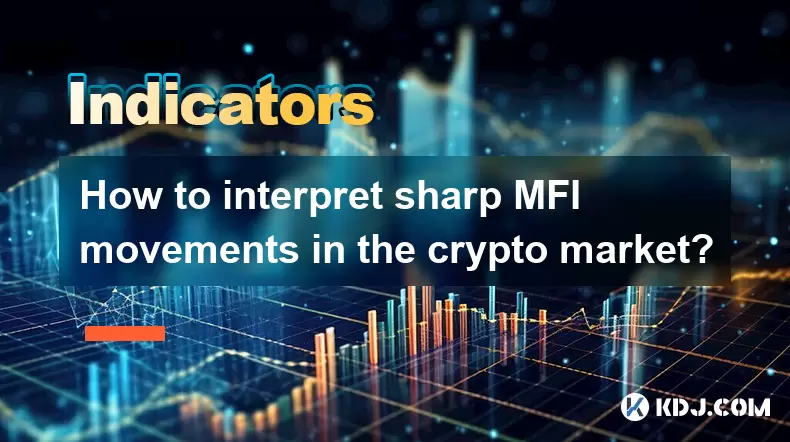-
 Bitcoin
Bitcoin $114800
-0.87% -
 Ethereum
Ethereum $4776
1.26% -
 XRP
XRP $3.035
-0.59% -
 Tether USDt
Tether USDt $0.9997
0.01% -
 BNB
BNB $868.3
-2.21% -
 Solana
Solana $207.8
2.24% -
 USDC
USDC $0.9999
0.00% -
 Dogecoin
Dogecoin $0.2321
-2.70% -
 TRON
TRON $0.3658
1.42% -
 Cardano
Cardano $0.9042
-1.85% -
 Chainlink
Chainlink $25.67
-0.24% -
 Hyperliquid
Hyperliquid $43.96
1.17% -
 Sui
Sui $3.679
-2.11% -
 Stellar
Stellar $0.4091
-1.83% -
 Ethena USDe
Ethena USDe $1.000
-0.01% -
 Bitcoin Cash
Bitcoin Cash $593.4
0.58% -
 Avalanche
Avalanche $25.53
0.89% -
 Hedera
Hedera $0.2476
-1.21% -
 Litecoin
Litecoin $119.7
-1.84% -
 UNUS SED LEO
UNUS SED LEO $9.609
0.34% -
 Toncoin
Toncoin $3.352
-0.91% -
 Shiba Inu
Shiba Inu $0.00001292
-2.45% -
 Uniswap
Uniswap $11.08
-1.13% -
 Polkadot
Polkadot $4.100
-1.09% -
 Cronos
Cronos $0.1609
4.53% -
 Dai
Dai $0.9999
0.00% -
 Bitget Token
Bitget Token $4.706
-0.88% -
 Aave
Aave $350.1
2.03% -
 Monero
Monero $268.0
0.06% -
 Ethena
Ethena $0.7069
-4.77%
How to interpret sharp MFI movements in the crypto market?
A sharp MFI spike above 80 with high volume may signal overbought conditions, especially if price shows rejection candles—watch for reversals near key resistance levels.
Aug 13, 2025 at 11:35 am

Understanding the MFI Indicator in Cryptocurrency Trading
The Money Flow Index (MFI) is a momentum oscillator that measures the flow of money into and out of a cryptocurrency asset over a specified period, typically 14 days. Unlike the Relative Strength Index (RSI), which only considers price, the MFI incorporates volume, making it a volume-weighted RSI. This integration allows traders to gauge both price movements and the strength of those moves based on trading volume. When analyzing sharp movements in the MFI, it's essential to understand how volume and price interact. A sudden spike or plunge in the MFI can signal a shift in market sentiment, often before price reflects the change.
Sharp upward spikes in MFI above 80 are generally interpreted as overbought conditions, suggesting that buying pressure has been extremely strong. Conversely, sharp drops below 20 may indicate oversold conditions, where selling pressure has overwhelmed the market. However, in trending markets, especially in highly volatile crypto assets, these levels can persist for extended periods. Therefore, interpreting sharp movements requires context—such as the prevailing trend, recent news, and broader market conditions.
Identifying Bullish and Bearish Divergences
One of the most powerful uses of sharp MFI movements is detecting divergences between price and volume-weighted momentum. A bullish divergence occurs when the price of a cryptocurrency makes a new low, but the MFI forms a higher low. This suggests that despite downward price movement, selling volume is decreasing, and buying interest may be building.
- Observe price making consecutive lower lows
- Check if MFI forms higher lows during the same period
- Confirm with rising volume on up-candles following the divergence
Conversely, a bearish divergence happens when the price reaches a new high, but the MFI fails to surpass its previous peak. This indicates weakening buying pressure despite rising prices.
- Price achieves a higher high
- MFI shows a lower high
- Look for increased volume on down-candles after the peak
These divergences become especially significant when they coincide with sharp MFI reversals. For example, a sudden drop from overbought territory (above 90) following a bearish divergence can signal an imminent correction.
Interpreting MFI Breakouts from Overbought or Oversold Zones
Sharp movements that push the MFI into extreme zones and then rapidly reverse can indicate exhaustion in the current trend. When the MFI surges above 90, it reflects intense buying activity, often driven by FOMO (fear of missing out). A subsequent sharp decline from this level, especially if accompanied by a long upper wick or a bearish engulfing candle, may suggest that buyers are losing control.
- Wait for MFI to enter overbought zone (above 80)
- Monitor for a sharp drop back below 80
- Cross-verify with price action: look for rejection patterns at resistance
- Check volume: decreasing volume on upswings, increasing on downswings confirms weakening momentum
Similarly, a sharp rise from below 10 (deep oversold) can signal a potential reversal. Traders often use this as a contrarian signal, especially if the broader market sentiment begins to stabilize. The key is to avoid acting on the MFI alone—always combine it with support/resistance levels and candlestick patterns.
Using MFI in Conjunction with Other Indicators
Sharp MFI movements gain more reliability when confirmed by other technical tools. For instance, pairing MFI with Bollinger Bands can help contextualize volatility. A sharp MFI spike during a price touch of the upper Bollinger Band may confirm overextension. Alternatively, combining MFI with Moving Averages helps determine the trend bias.
- Apply 50-period and 200-period EMAs to identify trend direction
- Only consider overbought MFI signals in a strong uptrend as potential pullback entries
- In a downtrend, oversold MFI readings may not signal reversals but rather continuation setups
- Use MACD to confirm momentum shifts aligned with MFI reversals
Volume profile tools can also enhance interpretation. If a sharp MFI move occurs at a high-volume node, it adds credibility to the signal. For example, a sharp MFI drop at a major resistance level with high volume suggests strong distribution.
Practical Steps to Analyze Sharp MFI Movements
To effectively interpret sharp MFI changes, follow this structured approach on any crypto trading platform like TradingView or Binance:
- Open the chart of the cryptocurrency you're analyzing (e.g., BTC/USDT)
- Apply the MFI indicator with a 14-period setting
- Adjust the overbought (80) and oversold (20) levels for clarity
- Zoom into recent price action where a sharp MFI spike or drop occurred
- Compare the timing of the MFI movement with candlestick patterns
- Overlay volume bars to see if volume surged during the MFI spike
- Mark key support and resistance zones to assess contextual relevance
- Wait for confirmation: a follow-through candle or breakout in the expected direction
For example, if Bitcoin’s MFI jumps from 60 to 92 in two candles amid a parabolic rise, but the next candle closes deep in its range with high volume, it suggests exhaustion. This setup may precede a pullback, especially if it occurs near a known resistance level.
Common Pitfalls and How to Avoid Them
Traders often misinterpret sharp MFI movements as immediate reversal signals, but this can lead to premature entries. One major pitfall is acting on MFI extremes in strong trends. In a bull run, MFI can remain above 80 for days without a significant correction. Similarly, in a crash, it can stay below 20 with no bottom in sight.
Another mistake is ignoring timeframes. A sharp MFI spike on a 15-minute chart may be noise compared to one on a daily chart. Always assess the MFI across multiple timeframes—what looks like a major signal on a lower timeframe might be insignificant in the broader context.
Lastly, failing to account for news events can distort MFI readings. A sudden tweet from a major influencer or an exchange outage can trigger a volume surge, causing a false MFI spike. Always cross-check with the news feed before acting.
Frequently Asked Questions
What does a sudden MFI spike from 30 to 70 indicate in a downtrend?
A rapid rise from below 30 to above 70 suggests strong buying volume entering the market. While it may indicate a potential reversal, confirmation is required. Look for a close above a recent swing high and sustained volume to validate the shift in momentum.
Can MFI give false signals during low-volume periods?
Yes. During low trading volume—such as weekends or holidays—even small trades can cause sharp MFI movements. These are often misleading. Always check the volume profile and avoid making decisions based on MFI alone during such periods.
How do I adjust MFI settings for different cryptocurrencies?
The default 14-period setting works well for most major coins like Bitcoin and Ethereum. For highly volatile altcoins, consider shortening to 10 periods for quicker signals, or lengthen to 20 for smoother readings on stablecoins or less volatile pairs.
Is MFI more effective on certain timeframes?
Higher timeframes like daily or 4-hour charts provide more reliable MFI signals due to reduced noise. Sharp movements on 5-minute or 1-minute charts are prone to whipsaws and should be used cautiously, preferably for scalping with tight risk control.
Disclaimer:info@kdj.com
The information provided is not trading advice. kdj.com does not assume any responsibility for any investments made based on the information provided in this article. Cryptocurrencies are highly volatile and it is highly recommended that you invest with caution after thorough research!
If you believe that the content used on this website infringes your copyright, please contact us immediately (info@kdj.com) and we will delete it promptly.
- Viral Memes, RWA Platforms, and DePIN Crushers: What's Hot in Crypto?
- 2025-08-24 14:45:20
- Meta's Hypernova Glasses: AR's Next Big Thing?
- 2025-08-24 15:05:15
- Down Under Showdown: Australia vs. South Africa in ODI Cricket
- 2025-08-24 15:10:14
- XYZVerse, Shiba Inu, and the 2025 Bull Cycle: A Meme Coin Evolution
- 2025-08-24 13:05:12
- WLFI Token, BingX, and the Trading Landscape: A New York Perspective
- 2025-08-24 12:45:20
- Aave, Governance, Allocation: Navigating DeFi's Shifting Sands
- 2025-08-24 12:45:20
Related knowledge

What does it mean when the +DI and -DI cross frequently in the DMI indicator but the ADX is flattening?
Aug 11,2025 at 03:15am
Understanding the DMI Indicator ComponentsThe Directional Movement Index (DMI) is a technical analysis tool composed of three lines: the +DI (Positive...

What does the sudden appearance of a "dark cloud cover" candlestick pattern during an uptrend indicate?
Aug 13,2025 at 11:35am
Understanding the 'Dark Cloud Cover' Candlestick PatternThe dark cloud cover is a bearish reversal pattern in technical analysis that typically appear...

What does it mean when the moving average, MACD, and RSI all send buy signals simultaneously?
Aug 11,2025 at 01:42pm
Understanding the Convergence of Technical IndicatorsWhen the moving average, MACD, and RSI all generate buy signals at the same time, traders interpr...

What does it mean when both the KDJ indicator and the RSI show overbought signals simultaneously?
Aug 13,2025 at 11:35am
Understanding the KDJ Indicator in Cryptocurrency TradingThe KDJ indicator is a momentum oscillator derived from the Stochastic Oscillator, widely use...

What does it mean when the price is trading above the SAR indicator but the red dots are densely packed?
Aug 09,2025 at 11:49pm
Understanding the SAR Indicator and Its Visual SignalsThe SAR (Parabolic Stop and Reverse) indicator is a technical analysis tool used primarily to de...

What does it mean when the candlestick chart forms a "Morning Star" but trading volume is sluggish?
Aug 12,2025 at 06:28pm
Understanding the Morning Star Candlestick PatternThe Morning Star is a three-candle bullish reversal pattern commonly observed in cryptocurrency pric...

What does it mean when the +DI and -DI cross frequently in the DMI indicator but the ADX is flattening?
Aug 11,2025 at 03:15am
Understanding the DMI Indicator ComponentsThe Directional Movement Index (DMI) is a technical analysis tool composed of three lines: the +DI (Positive...

What does the sudden appearance of a "dark cloud cover" candlestick pattern during an uptrend indicate?
Aug 13,2025 at 11:35am
Understanding the 'Dark Cloud Cover' Candlestick PatternThe dark cloud cover is a bearish reversal pattern in technical analysis that typically appear...

What does it mean when the moving average, MACD, and RSI all send buy signals simultaneously?
Aug 11,2025 at 01:42pm
Understanding the Convergence of Technical IndicatorsWhen the moving average, MACD, and RSI all generate buy signals at the same time, traders interpr...

What does it mean when both the KDJ indicator and the RSI show overbought signals simultaneously?
Aug 13,2025 at 11:35am
Understanding the KDJ Indicator in Cryptocurrency TradingThe KDJ indicator is a momentum oscillator derived from the Stochastic Oscillator, widely use...

What does it mean when the price is trading above the SAR indicator but the red dots are densely packed?
Aug 09,2025 at 11:49pm
Understanding the SAR Indicator and Its Visual SignalsThe SAR (Parabolic Stop and Reverse) indicator is a technical analysis tool used primarily to de...

What does it mean when the candlestick chart forms a "Morning Star" but trading volume is sluggish?
Aug 12,2025 at 06:28pm
Understanding the Morning Star Candlestick PatternThe Morning Star is a three-candle bullish reversal pattern commonly observed in cryptocurrency pric...
See all articles

























































































